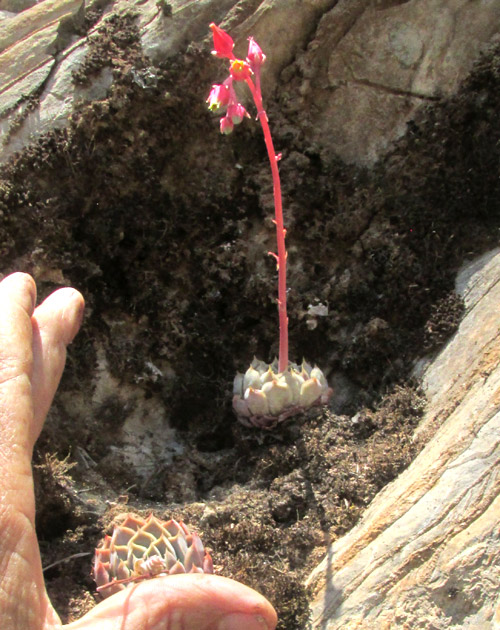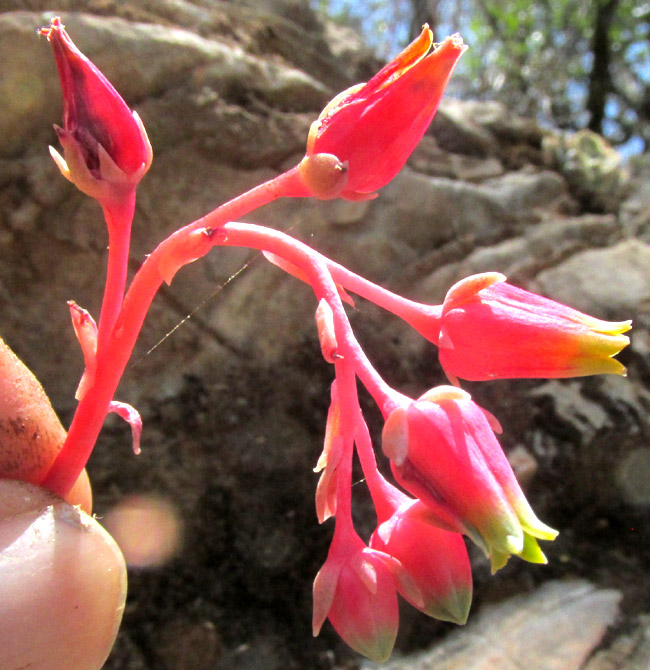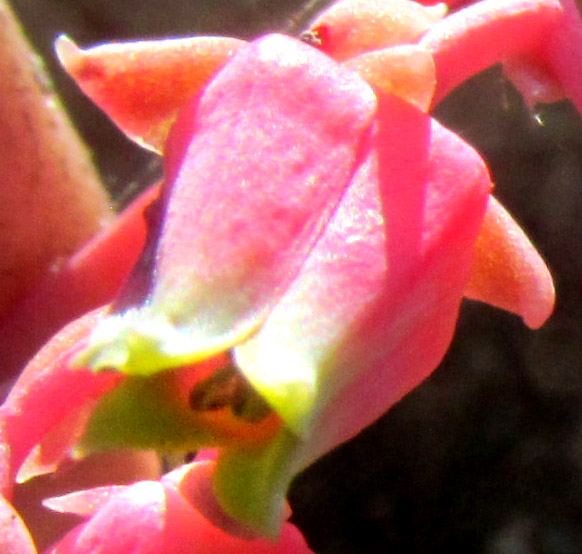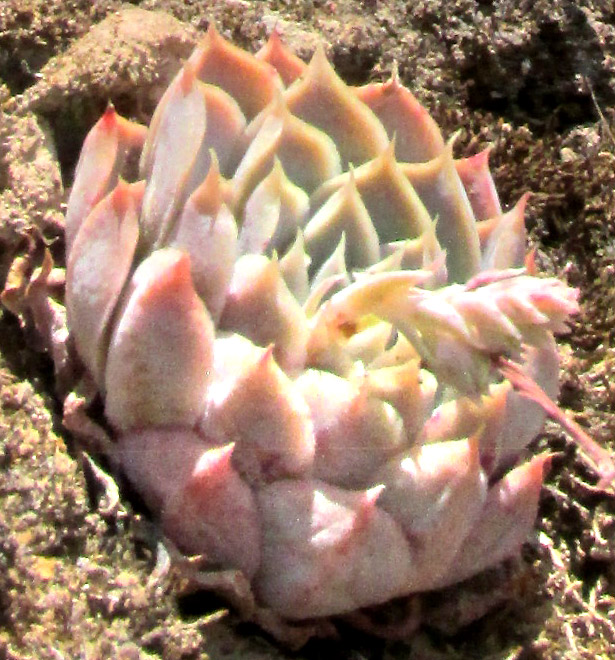Excerpts from Jim Conrad's
Naturalist Newsletter
Entry dated April 21, 2024, from notes taken about 1km northwest of Puerto de los Velazquez, Municipality of Pinal de Amoles; N21.124°, W99.679°, elevation ~2750 meters (~9020 feet); oak-pine on limestone bedrock; in the Eastern Sierra Madre Mountains of east-central Querétaro state, MÉXICO
ECHEVERIA HYALINA

On a steep, south-facing slope atop a low roadcut through limestone, the above succulents, of the kind often known in garden shops as "hen and chicks," were thriving. That's despite the ongoing weather pattern described by the North American Drought Monitor as a D4 Drought, the droughtiest category they have, the one beyond D2 Severe and D3 Extreme. That name "hen and chicks" reflects the fact that this kind of plant produces offsets, the chicks. The name is applied to numerous species.
Earlier, with regard to some Blue Echeverias found about 25 straight-line kms north of this location, I'd learned that the hen and chicks situation in this area was far more complex, and interesting, than I'd thought. Therefore, several close-ups of these plants' flowers were taken:

In the 2008 volume of the Flora del Bajío, the above plant "keys out" to the species Echeveria secunda. However, nowadays new species have been recognized which incorporate plants earlier regarded as mere variations of Echeveria secunda.

The flowers' sepals were a bit unequal from one another in length, and that seems to be of importance in recognizing the newly erected species.

Corolla tips were yellow inside.

Above, note that an immature inflorescence was beginning to emerge near the center of the leaf cluster. Also, in stark contrast to the Blue Echeveria linked to above, these plants' blade tips and spines were not deep dark purple.
I sent the above pictures to iNaturalist user and Echeveria expert Yeonbin Jeong, who recognized our plants as ECHEVERIA HYALINA. Like the earlier-encountered Blue Echeveria, Echeveria hyalina formerly was considered to be a mere variation of Echeveria secunda. At this writing, the name Echeveria hyalina is accepted by Kew's Plant's of the World Online database.
Yeonbin Jeong wrote to me that Echeveria hyalina can be found in the central Mexican states of Hidalgo, Aguascalientes, Querétaro, Guanajuato and San Luis Potosí. Also, that within this species there are many variations in appearance, or phenotypes, and that the chromosome counts of the various phenotypes vary strikingly.
One wonders whether such subtleties might exist for far more taxa than we imagine. Also, whether the traditional binomial naming system is adequate for dealing with these new understandings. My sense is that taxonomy is drifting toward "DNA barcoding," which is the identification of a species by the characteristic sequence of a standard short section of DNA in its genome.
In other words, it appears as if in the future we won't be looking at organisms themselves to identify them, but rather at their genetic makeup.
Of course there's no literature about the traditional medicinal uses of this obscure, little-known species. But, it was indeed a pleasure to see it where it was, doing its thing.